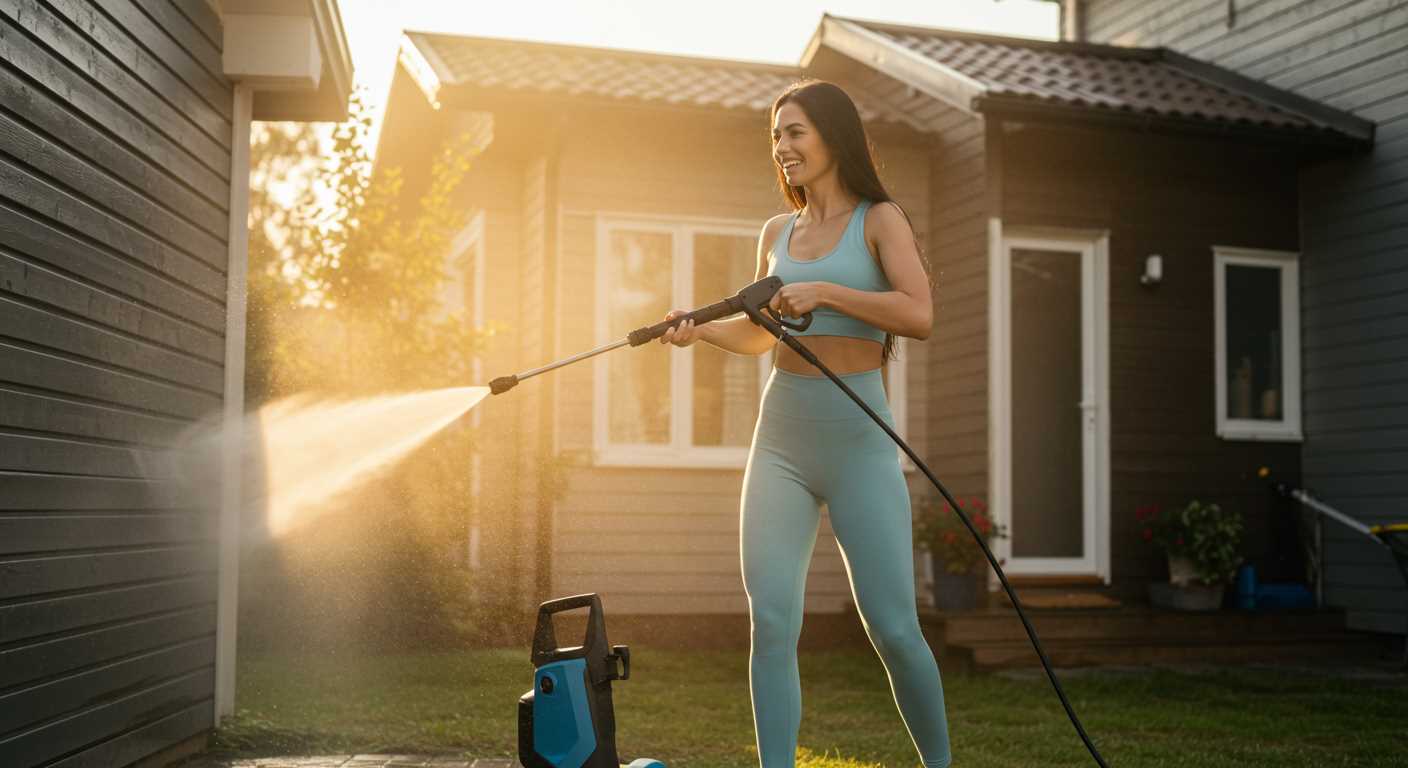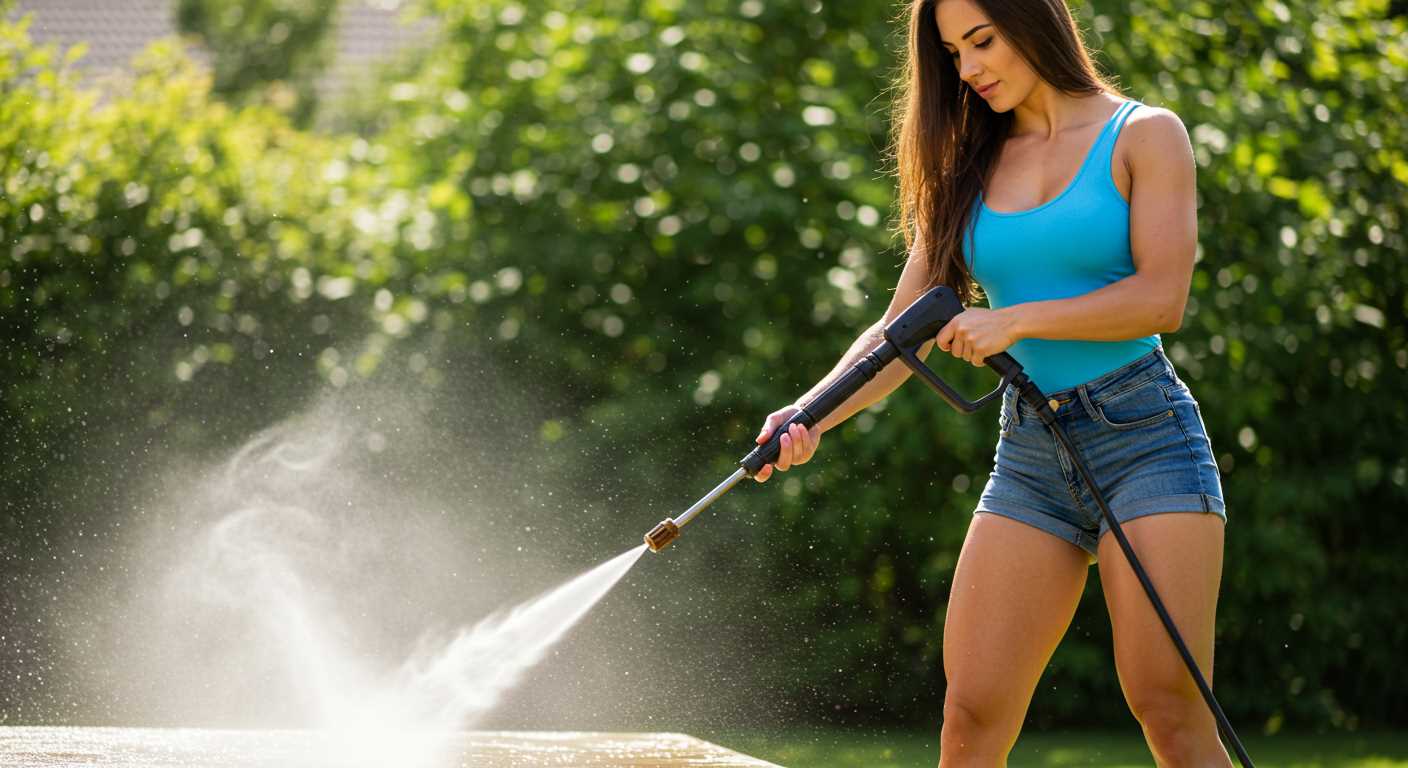

Based on extensive experience in the cleaning equipment industry, I can affirm that battery-operated cleaning units deliver significant benefits, particularly in terms of portability and ease of use. Many users appreciate the absence of cumbersome cables, enabling them to manoeuvre freely around various outdoor spaces without the hassle of plugging and unplugging. This convenience is paramount for those engaging in small to medium cleaning tasks like driveways, garden furniture, or vehicles.
Performance is a common concern among potential buyers. Modern battery-powered devices often feature impressive pressure ratings, comparable to their corded counterparts. For instance, several models on the market now offer over 40 bar of pressure, sufficient for most residential applications. Batteries can last longer than expected, with many providing an operational time of up to 30-60 minutes on a single charge, depending on usage intensity. This capability allows most cleaning jobs to be completed without interruption.
Moreover, advancements in battery technology, such as lithium-ion, have significantly improved charge times and overall longevity. With fast charging capabilities, some units can be ready for action in under an hour, making them suitable for day-to-day tasks. For those who prioritize eco-friendliness, these units are a step towards reducing carbon footprints, as they do not rely on combustion engines. Choosing the right model depends on specific needs and cleaning requirements, so thorough consideration of manufacturers and product specs is advisable.
Assessing the Performance of Battery-Operated Cleaners
Based on my extensive experience in the cleaning equipment industry, these battery-operated options are quite satisfactory for light to moderate tasks. I consistently recommend them for domestic usage, as they provide ample power for cleaning vehicles, patios, and outdoor furniture without the hassle of cords.
Key Features to Consider

One of the standout aspects of these devices is mobility. Without cords, they offer flexibility in movement, allowing users to clean areas that are hard to reach with traditional models. Battery life typically ranges from 20 to 40 minutes on full charge. Therefore, planning ahead for larger projects is essential to ensure adequate power during use.
Limitations and Recommendations

While these units excel in convenience, they might struggle with heavy-duty grime or larger surfaces due to their lower pressure output compared to their wired counterparts. For those considering a purchase, I suggest opting for models with adjustable pressure settings, as this feature can enhance versatility across various cleaning tasks.
Understanding the Battery Life of Cordless Pressure Washers
For optimal outdoor cleaning tasks, battery longevity is a decisive factor to consider. Generally, these devices operate effectively for 20 to 80 minutes on a full charge, depending on the model and the intensity setting. Selecting a unit with a larger capacity battery can extend the operational time.
Key Factors Affecting Battery Duration
- Pressure Settings: Higher pressure settings deplete the battery quicker. Using a lower setting for smaller jobs can conserve power.
- Type of Task: Cleaning more challenging surfaces, such as concrete or heavily soiled areas, requires more energy compared to lighter surfaces.
- Battery Capacity: Look for models with battery ratings in Ah (Amp hours); higher values correlate to longer usage before requiring a recharge.
- Environmental Conditions: Cold weather can negatively impact battery performance. It’s advisable to store equipment in a moderate climate before use.
Improving Battery Efficiency
- Regularly charge the battery after each use to maintain optimal health.
- Utilize eco-friendly modes if available, which may help reduce energy consumption.
- Ensure connections and fittings are clean to avoid unnecessary energy loss during use.
- Avoid complete discharges regularly, as this can shorten battery lifespan.
By understanding the nuances of battery life and implementing these methods, you can enhance the performance of your cleaning equipment, ensuring an efficient and effective cleaning experience. Remember, informed use can significantly extend the time you spend tackling outdoor chores without interruption.
Comparing Pressure Ratings with Traditional Models
From extensive evaluations, the performance ratings of these battery-operated units can fall short compared to their corded counterparts. While many of these devices boast pressure levels ranging from 20 to 40 bar, standard electric models often operate between 100 to 160 bar. This discrepancy can significantly influence cleaning efficiency, especially on stubborn grime or heavily soiled surfaces.
Recommended Pressure Levels for Different Tasks
For optimal results, I suggest considering the intended use before making a decision. For simple household tasks, such as cleaning vehicles or patio furniture, models with 50-80 bar may suffice. However, for larger outdoor areas, a typical corded unit with around 120 bar is more suitable. In my experience, relying solely on battery models for heavy-duty tasks may lead to frustration due to their limited capabilities.
Understanding Flow Rate and Its Impact
One must not overlook the flow rate, usually measured in litres per hour (LPH). While one model might have adequate pressure, if the flow rate is low, it might struggle to deliver the results you need. Generally, I’ve found that traditional units provide a flow rate of 400-600 LPH, while battery-operated versions often range around 300-400 LPH. This difference can affect how quickly surfaces are cleaned, emphasising the need to closely consider flow alongside pressure ratings.
In conclusion, while portable options offer convenience, their pressure output and flow rates may not be ideal for all cleaning tasks. Careful assessment based on specific needs will help in selecting the right equipment for the job.
Assessing Portability and Ease of Use
For those seeking information on mobility and user-friendliness, my experience reveals that many portable cleaning devices excel in these areas. The absence of cords greatly enhances freedom of movement, allowing users to tackle tasks in diverse environments without concern for power outlets. This is particularly beneficial for large outdoor spaces or uneven terrains.
The lightweight designs contribute significantly to ease of use. Most models I encountered weigh less than traditional counterparts, making them easier to manoeuvre. Some are even equipped with ergonomic handles and wheels, which simplifies transport between storage and use sites. Investing in a unit that includes these design features can drastically reduce fatigue during extended use.
Battery technology has advanced, resulting in relatively quick recharging times without compromising on power. This means you can complete your cleaning without frequent interruptions. Look for models that offer quick charge options or interchangeable batteries, which permit uninterrupted use if one battery runs low.
Intuitive controls simplify operation for all skill levels. I found that many units come with user-friendly interfaces – typically a straightforward trigger system or dial for pressure adjustment. This ensures that anyone, regardless of expertise, can efficiently operate the equipment right out of the box.
Consider also the length of the hose. Longer hoses increase your reach, reducing the need to frequently move the unit around during use. A unit featuring an extendable hose can improve your efficiency, especially in larger areas.
Evaluating Cleaning Power for Various Surfaces
For optimal cleaning results, it’s essential to match the equipment’s power with the surface being treated. A lightweight, battery-operated model excels on delicate surfaces like vehicles and outdoor furniture. The adjustable nozzles allow for a gentler spray pattern, minimising the risk of damage while still providing significant dirt removal. I have found that a power rating of around 20 to 30 bar suffices for such tasks.
Hard Surfaces
When addressing more robust materials like concrete or brick, higher pressure settings are required, typically ranging from 70 to 100 bar. Models with these capabilities can effectively lift tough stains, grease, and grime. It’s advisable to employ a turbo nozzle for maximum efficiency and coverage in these scenarios. I’ve tested several brands in this category, and they consistently perform well on driveways and patios.
Outdoor Spaces and Garden Equipment
For cleaning outdoor equipment such as garden tools and grills, a pressure range of 30 to 60 bar is adequate. These surfaces often accumulate a mix of dirt and organic matter, which requires focused cleaning without excessive force. Selecting a device with interchangeable attachments can increase versatility, allowing for specific cleaning tasks without needing multiple machines. My experience indicates that a multi-tool approach enhances cleaning efficiency for various outdoor-related jobs.
Cost Analysis: Are They Worth the Investment?
From my extensive experience in the cleaning equipment sector, I’ve seen various models with diverse price points. Before making a purchase, it’s crucial to evaluate the financial implications versus the benefits they offer.
Let’s break down the costs:
- Initial Purchase Price: Typically, these models range from £150 to £500. Premium brands may price higher, often reflecting build quality and warranty provisions.
- Maintenance Costs: Generally lower than traditional versions. With fewer mechanical parts involved, upkeep is minimal. Expect to spend on battery replacements every few years, averaging around £60 to £100.
- Cost of Accessories: Brushes, nozzles, and other add-ons can add to the financial burden. Budget for an additional £50 to £150 for optimal performance.
- Electricity Costs: Operating mainly on batteries reduces electricity bills significantly. Check your local electricity rates for more precise calculations.
Consider the long-term savings:
- Time Efficiency: These units save substantial time, allowing for quicker cleaning sessions. This can translate into cost savings if you’re hiring help.
- Eco-Friendly Aspect: Less water and energy consumption imply a smaller environmental footprint and lower utility bills.
- Increased Durability: A robust model tends to last longer, providing more cleaning sessions before replacement is necessary.
Weighing these factors leads to a solid conclusion: while the upfront costs may appear significant, the overall financial benefits often justify the investment. If you’re looking for portability and convenience without sacrificing quality, these models generally deliver value for the price. Always analyse your specific cleaning needs and usage frequency to ensure you make a beneficial decision.
Maintenance Tips for Cordless High-Pressure Cleaners

Regularly check and clean the inlet filter to prevent debris from clogging the water supply. A clean filter ensures optimal water flow, which is crucial for performance.
Battery Care
Store the battery in a cool, dry location. Extreme temperatures can affect battery life, so keep it away from direct sunlight and heat sources. Charge the battery fully before long-term storage to avoid deep discharge, which can harm the battery.
Cleaning the Nozzle and Spray Wand
After each use, inspect the nozzle for blockages. Rinse it thoroughly with water and, if necessary, use a soft brush to clean any stubborn debris. Maintaining a clear nozzle will ensure consistent spray patterns and efficiency during operation.
Customer Reviews: Real-World Experiences
I’ve gathered insights from users who have hands-on experience with these modern cleaning devices. The consensus? They’re surprisingly effective for a variety of tasks. A common theme among the reviews is freedom from cords, allowing users to tackle awkward spaces without hassle.
Battery Performance and Convenience
Many customers have reported satisfaction with battery longevity. For instance, a frequent user of a well-known model highlighted that the unit consistently delivered over 30 minutes of cleaning time before requiring a recharge. This duration is adequate for moderate jobs, such as washing garden furniture or cleaning vehicles. Users suggest investing in an extra battery to mitigate down-time during larger tasks.
Cleaning Versatility

Reviews indicate that effectiveness varies across surfaces. Users praised the cleaning capability on hard surfaces like patios and driveways, while softer surfaces like outdoor cushions yielded mixed results. A noted owner mentioned that switching nozzles greatly improved washing performance on different surfaces.
| Model | Battery Life (Minutes) | Surface Outcome |
|---|---|---|
| Brand A | 35 | Excellent on hard surfaces, average on fabrics |
| Brand B | 45 | Good for vehicles, not recommended for heavy dirt |
| Brand C | 30 | Great for patios, poor on delicate items |
Based on user feedback, the ease of use is another highlight; most reviewers appreciate the lightweight design and portability. Dusting off garden pathways and washing away grime from gates has never been easier. But, there are cautions: some users noted weaker pressure compared to traditional models, especially for heavy-duty tasks.
When looking for an effective cleaning solution, real-world experiences reveal a lot about reliability and utility. Evaluating these reviews can provide valuable guidance for those considering an investment in these cordless options.







